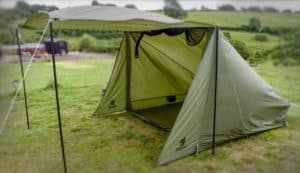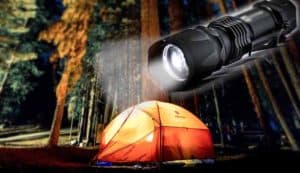This page may have Commerce Content. If you buy something from our posts, we may get a small share of the sale. Click here for more.
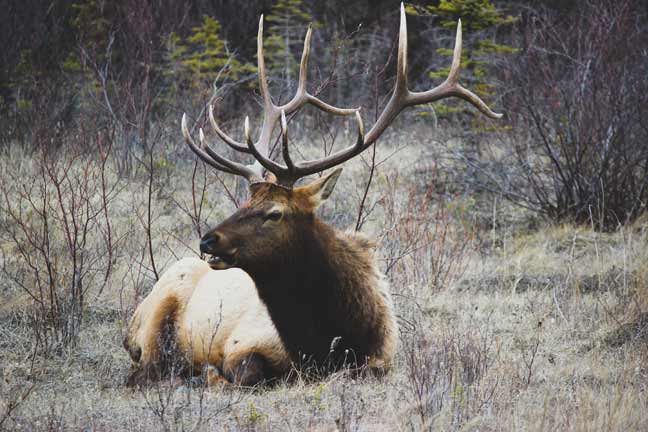

Editor & Article Writer for Outdoor Wilds
Share via:
Introduction to North American Deer Species
In this article I want to take a look at some of the different deer species found in North America.
The most common ones are the white-tailed deer, the Mule deer, the Caribou (also known as Reindeer), Elk and Moose.
There is also the black-tailed deer which is a subspecies of the Mule deer. I want to focus on and learn more about 3 of the species mentioned.
If your a trail camera user then chances are you’ve captured images of some of these deer on your SD card while scouting.
Popular Posts
As an Amazon Associate I earn from qualifying purchases. Thank you for helping to support the site.
White-Tailed Deer
Let’s start with the white-tailed deer. The scientific name is Odocoileus virginianus. With it being a native species of North America, it is the most common one you can find there.
It got its name from some white marking on the underside of the tail. But there are also some white markings on its throat, on the stomach and around the eyes and nose.
Everything else is tan or brown during the summer and changes more towards a grayish brown during the winter.

A male deer is called a buck and the female one is a doe. Typically they are between 21 to 47 inches at shoulder height. This makes them the smallest member of the North American deer family.
A Doe (female deer) weigh around 100 pounds while most bucks (the male ones) weigh between 150-175 pounds. Even though mature bucks can weigh up to 300 pounds.
The bucks also have antlers. They have a velvet covering that allows the blood supply to the antlers. Like all deer they lose their antlers during the winter. When early spring starts they re-grow and are fully grown by late summer. The antlers can grow up to ½ an inch a day.
You can find the white-tailed deer from Southern Canada down to South America but mostly east of the Rocky Mountains. Their home range varies in different regions.
The home range is nothing else than how far a deer will travel within its home location. It’s based on food and the cover that’s available for the night.
We as humans have a great influence on this as well since they do not like to be disturbed.
In general the home range is within 1 square mile from where they are located. Even though the bucks will venture further than that during the rutting season.
Normally they like to choose forests, plains, deserts, tropical rainforests, scrub lands and mountains as their home location.
When choosing a location they like to have a thick cover and closeness to good food sources.
Even though their diet changes depending on the habitat (their home location) and the seasons, the white-tailed deer is a herbivore. That just means they are plant eaters.
During the spring and summer it will mostly eat green plants. While it eats more corn, acorns and other nuts during the fall.
In the winter you will find them eat buds and twigs from woody plants. They travel on well used trails to get to the feeding areas. That’s the case in the early morning and late afternoon.
Read my article to find out in more detail what type of food a deer eats.
Mule Deer
Now we want to look at the species of the Mule deer. Its scientific name is Odocoileus hemionus. It got its name form its large ears that are similar to the ears of a mule.
Because of its large mule like ears it is easy to identify. When identifying them you can also look for their distinctive black forehead or mask. That’s contrasting with their light grey face.
Other than that they are brownish gray in color and have a white patch on their rump. They also have a small white tail with a black tip.
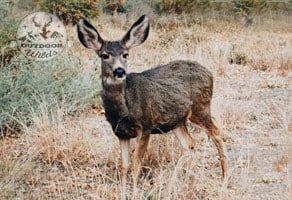
Mule deer are around 3 to 3 ½ feet tall at the shoulder. It’s not so easy to know the exact height they can reach but in general the mule deer is bigger than the white-tailed deer.
They can also weigh anywhere around 130-280 pounds. The bucks have antlers as well. Yet there is a difference between the antlers from of white-tailed deer and the ones from a mule deer.
The antlers from the white-tailed deer are branching from a single beam. And the antlers from the mule deer are bifurcated. That means they “fork” (split in two beams) as they grow. Mule deer also have a very distinct bounding escape trait called “stotting”.
It’s nothing else than them leaping or springing high in the air, lifting all four feet off the ground at the same time.
Usually the legs are held in a stiff position and their back may be arched. They will use that behavior go get away from a dangerous situation instead of running away.
With each bound they can jump as high as 2 feet and as far as 15 feet. It might not get away as fast as a white-tailed deer, but it is more effective in quickly changing directions and moving through rugged areas.
They also have very good hearing, eyesight and sense of smell that warns them of approaching danger.
You can find them mostly in western North America. But some also range from the coastal islands of Alaska down the west coast to southern Mexico.
They prefer rugged remote habitats. That means places that are far from the main centers of population which have a rocky or uneven surface. So they might also settle down in forests and wooden hill areas.
But they can also be found in desert regions if there’s enough vegetation. Normally the mule deer herd will move to a higher ground during the summer. Mule deer are herbivore as well. So they eat a great variety of vegetation. Such include sage, conifers, leaves, twigs and other woody brush.
Unlike the white-tailed deer, the mule deer won’t eat acorns and nuts that much. View the Youtube video below to see some mule deer caught on a trail camera.
Black-tailed deer
With that knowledge it is good to mention that there are 9 subspecies of the mule deer. As mentioned at the beginning one of them is the black-tailed deer, which we want to talk about right now.
The black-tailed deer being a subspecies means that it is a regional variation of the mule deer. Its scientific name is Odocoileus hemionus columbianus.
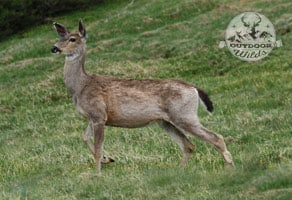
Compared to the mule deer it is smaller in size and weight. A black-tailed deer might only reach a weight between 100-150 pounds. They also have darker coats and larger black tails.
Even though the coat changes its color with the seasons. It is a reddish brown during the summer and more brownish gray during the winter.
The black-tailed deer inhabits the Pacific Coast from Oregon to Alaska. It is common to be found in California, western Oregon and Washington. But also near the coasts and interior of British Columbia. They prefer a mild climate with ample rainfall.
Unlike the mule deer, the black-tailed deer prefers forest edges over the rugged habitat. They like to be close to meadows and always choose a home location with a good cover and shelter.
Just like the other deer, the black-tailed deer are herbivore. And just like the white-tailed deer they do eat acorns and nuts. Other than that they like to eat shrubs, herbs, grass, berries and green foliage. It will also eat crops if it gets the chance to.
Useful links
Popular Posts







